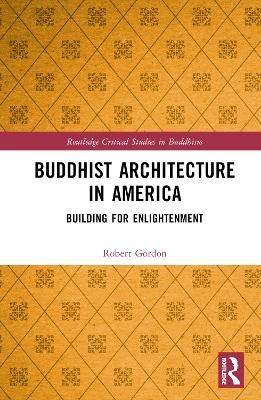
Buddhist Architecture in America
Routledge (Verlag)
978-1-032-31845-5 (ISBN)
This book is the first comprehensive overview of Buddhist architecture in North America and provides an analysis of Buddhist architecture and communities.
Exploring the arrival of Buddhist architecture in America, the book lays out how Buddhists have expressed their spiritual beliefs in structural form in the United States. The story follows the parallel history of the religion’s emergence in the United States since the California Gold Rush to the present day. Conceived of as a general history, the book investigates Buddhist structures with respect to the humanistic qualities associated with Buddhist doctrine and how Buddhist groups promote their faith and values in an American setting. The author’s point of view starts from the ground floor of the buildings to move deeper into the space of Buddhist practice, the mind that seeks enlightenment, and the structures that help one to do so. It discusses Buddhist architecture in the United States in a manner consistent with the intensely human context of its use.
A unique and ground-breaking analysis, this book adds to the study of Buddhist architecture in America while also addressing the topic of how and why Buddhists use architecture in general. It will be of interest to scholars of religion, architecture, space and place, U.S. history, Asian Studies, and Buddhist Studies. It will also be a valuable addition to the libraries of Buddhist communities across the United States and the world, since many of the observations about Buddhist architecture in the United States may also apply to structures in Europe and Asia.
Robert Edward Gordon is an Assistant Research Professor at the University of Arizona, USA, and a Fellow at the UArizona Center for Buddhist Studies. His work encompasses a broad range of interests: Eastern art and architecture, art and economics, freedom and aesthetics, art and poverty, and humanistic geography. His writings can be found in The Wall Street Journal, the Japanese American National Museum’s Traveling Exhibition, the journals Space and Culture, Philosophies, Social Philosophy and Policy, The Athenaeum Review, and others.
Introduction; 1. Buddhism and Architecture: Space, Time, and Heart; 2. Buddhist Architecture and its Nineteenth-Century American Beginnings; 3. The Twentieth-Century Expansion of Architectonic Buddhism; 4. The Proliferation of Buddhist Architecture in America; 5. The Mandala Form and Buddhist Space in America; 6. Conclusions and Considerations
| Erscheinungsdatum | 28.10.2022 |
|---|---|
| Reihe/Serie | Routledge Critical Studies in Buddhism |
| Zusatzinfo | 23 Halftones, black and white; 23 Illustrations, black and white |
| Verlagsort | London |
| Sprache | englisch |
| Maße | 156 x 234 mm |
| Gewicht | 510 g |
| Themenwelt | Geisteswissenschaften ► Religion / Theologie ► Buddhismus |
| Naturwissenschaften ► Biologie ► Ökologie / Naturschutz | |
| Sozialwissenschaften ► Soziologie ► Spezielle Soziologien | |
| Technik ► Architektur | |
| ISBN-10 | 1-032-31845-7 / 1032318457 |
| ISBN-13 | 978-1-032-31845-5 / 9781032318455 |
| Zustand | Neuware |
| Haben Sie eine Frage zum Produkt? |
aus dem Bereich


